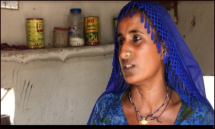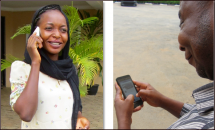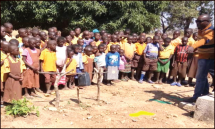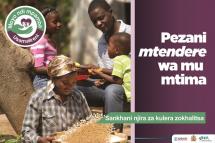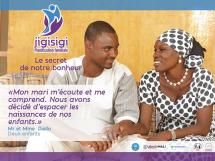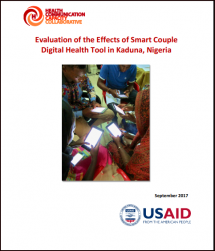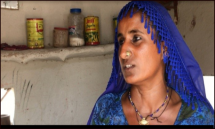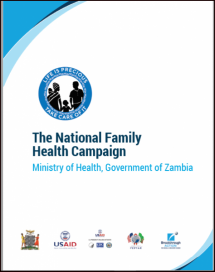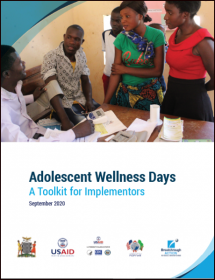Health Communication Component, Pakistan
From 2014-2018, the Johns Hopkins Center for Communication Programs (CCP) led the Health Communication Component (HCC) in Pakistan, an initiative that worked to improve maternal, newborn and child health and family planning in the country’s southeastern Sindh province.
The project envisioned a Pakistan where individuals, families and communities advocate for their own health, practice positive health behaviors and engage with a responsive health care system. Central to accomplishing those goals was the development of the “Bright Star” campaign. HCC described a “Bright Star” as someone working to improve the health of his or her family, community or country. HCC’s aspirational mass media campaign and comprehensive approach to community mobilization encouraged people to come together to spark meaningful behavior change to improve maternal and child health.
The Health Communication Component worked to assist Pakistanis with advocating for a stronger health care system in their country.
During these five years, the Health Communication Component:
Helped develop the popular television serial Sammi, which used engrossing characters and engaging storytelling to raise awareness of social issues and prejudices rarely discussed in mainstream Pakistani society. Sammi has reached more than 9 million viewers through television and social media.
Designed several toolkits to engage community members in discussions around the issues of gender, health, and social norms.
Developed mobilization tools – both print and digital – to help frontline health workers counsel their clients and lead community meetings on issues of maternal and child health, nutrition and immunization as well as family planning. One such tool, the IPC toolkit, equipped more than 7,500 health workers to reach more than 2 million community members.
Established partnerships, including with local universities, to help Pakistanis create their own behavior change programming.
Implemented a family planning campaign that reached more than 95,000 people through community fairs and more than 10 million people through mass media, including two short films. The successful campaign spurred an increase in referrals for family planning from 8,230 to 11,686 per month.
With the mass media products created in the Bright Star and Lady Health Worker campaigns, the project reached an estimated audience of 38.5 million people.
Community Mobilization Activities, and Community Media Activities under the Family Planning Campaign – including health talks, health stalls, mohalla (neighborhood) meetings, flotillas, and grand mela events and Bright Star outreaches – spread over 10 districts – directly reached 128,520 people.
Overall, more than 10,600 individuals were exposed to the project work, including 6,260 Lady Health Workers, 2,340 government personnel, 41 university students and 1,571 Community Health Workers (CHWs) who have received job aids and tailored training.
Project Activities
Hailed by critics and viewers alike, the 2017 Pakistani television drama Sammi was called a “stand out” by the English-language publication The News on Sunday, while the website Hip In Pakistan called it the show “no one should miss.”
But this popular series was more than just entertaining. Sammi uses engrossing characters and engaging storytelling to raise awareness of social issues and prejudices rarely discussed in mainstream Pakistani society – with the ultimate goal of encouraging behavior change.
Sammi also tackled some of the underlying and deeply rooted social and gender norms of a society where discrimination against women is acceptable, and where traditional, cultural and religious practices impact the acceptance and practice of healthy behaviors surrounding family planning and maternal and child health, including visiting health clinics and adopting modern contraceptive methods.
Bright Star Family Planning Campaign
This harmonized multi-level campaign included behavior change communication activities at the community, mid- and mass media levels. The campaign materials included two short films, two television commercials (TVCs), two radio spots, 250,000 flyers and annual calendars to be used during the mass, mid and community level media activities. HCC conducted the campaign in ten intervention districts.
Goals of the campaign were to:
- Increase knowledge and access to family planning services
- Increase the contraceptive prevalence rate
- Reduce unmet need for family planning
Roshan Mustaqil, a Distance Education Smartphone app for Lady Health Workers
The Roshan Mustaqbil app is an adaptation of a paper-based toolkit designed to improve interpersonal communication among Lady Health Workers. The app includes two sections: An mCounseling section featuring 44 short video clips designed to be used during counseling sessions: 22 depicting a negative scenario and 22 depicting positive attitudes and healthy behaviors. The app also features an mLearning section that includes 21 instructional videos and self-directed activities to help improve the IPC skills of LHWs. A pilot study was carried out in the Matiari district to assess the feasibility and usability of using the app to improve LHW job performance.
Additional Project Materials and Products
Source: Johns Hopkins Center for Communication Programs, USAID
Date of Publication: October 13, 2020
SIMILIAR RESOURCES
Tools
Examples
- Entertainment-Education Curriculum
- Noora Health COVID-19 Resources
- Training Toolkit on MSM Programming for the MENA Region
- FGM Infographics
- Guide de Formation Conseil Dépistage du VIH au niveau Communautaire: manuel à l'intention du personnel non médical
- Plan Stratégique National de Plaidoyer en matière de lutte contre le Paludisme (PSNPP) en Côte d'Ivoire 2018-2023
- Who Self-Cares Wins
- Engaging Men and Boys: A Brief Summary of UNFPA Experience and Lessons Learned
- COVID-19 Global Risk Communication and Community Engagement Strategy
- WHO Global Strategy on Digital Health 2020-2025

